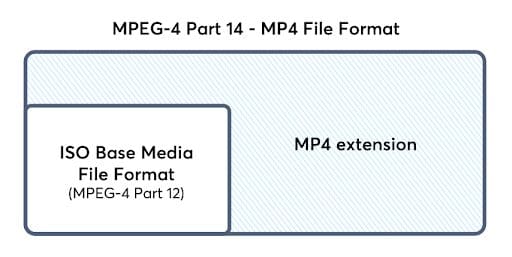It’s not a secret, the world of video technology looms largely in the shadows of back-end development.
In this shadowy realm, there is a constant battle amongst developers to find and implement the highest quality and lowest file size video format container.
In this article, we cover the history, definitions, and outlook of these containers in the MKV v MP4 debate, hopefully allowing you to “stream” away with a better understanding of each and how you can best utilize them to deliver top-quality video content.
Let’s get started!
MP4 Format
What is MPEG-4?
MP4 was initially created by the Moving Pictures Experts Group (MPEG) as a standardized video coding format in late 1998.
Although there are over 20 different MPEG standards, MP4 is still the most used format within the video developer community

MPEG-4 Part 14, otherwise known as MP4 or MPEG 4, is one of the most commonly used container file formats and often has a .mp4 file ending (or.m4s for segments). It is used for Dynamic Adaptive Streaming over HTTP (DASH) and can also be used for Apple’s HLS streaming.
MP4 is based on the ISO Base Media File Format (MPEG-4 Part 12), which is based on the QuickTime File Format. The MP4 container format supports a wide range of codecs, most commonly: H.264 or H.265 (HEVC) for video and Advanced Audio Coding (AAC) for audio.

Due to its versatility in application, MP4 is one of the most used video containers as it capable of delivering the top two streaming protocols, HLS and MPEG-DASH.
MKV Format
What is MKV?
MKV – Otherwise known as Matroska, was created in 2002 by independent (but soon-to-be Google) developer, Steve Lhomme, as a binary, free, and open-standard container format.
Matroska is usually found as an .MKV file (Matroska video), .MKA files (Matroska audio) and .MKS files (subtitles) and .MK3D files (stereoscopic/3D video). It is also the basis for .webm (WebM) files. WebM files are a major subset of Matroska.
MKV, an Extensible Binary Meta Language, was developed as a means to provide a free and open alternative to MP4.
Given its origin as an open standard, Matroska was built in a manner that could be adapted to support virtually any codec, however, one of the main goals was to support Google’s (also free and open) codecs like VP8 & VP9 or Opus & Vorbis.
Although Matroska is highly adaptable, many video distributors avoid implementation due to device incompatibility.
The long battle: MKV vs MP4
So you may ask yourself – what’s the actual difference between MP4 and MKV?
They’re both container formats and designed for versatile web video distribution (for both VOD & Live-Stream).
The reality is, both container formats have a very diverse (but similar) set of applications but are ultimately limited by protocols.
For example, MPEG-DASH is used more frequently by MP4 than MKV and HLS don’t even support MKV. MPEG-4 (MP4) offers better compatibility with more devices and browsers.
Take-Aways: Bitmovin and Container Formats
Bitmovin supports both of these container formats but utilizes MP4 with more overall frequency as it’s applied at the input, output, and player level.
Both formats were created by respected thought and standards leaders in the video industry.
MP4 by the Moving Picture Experts Group, who are at the forefront of standards development, pooling in experts from hundreds of organizations with the singular goal of improving a consumer digital video experience.
MKV by Matroska an open-standard format created by a passionate video developer and improved upon by the general development community.
We encourage all users and/or developers to try both formats to determine what’s best for their video-stack needs, so ultimately there is no clear cut “winner” between these container formats, but MP4 is being used at a higher frequency.
More video technology guides and articles:
- Encoding Definition and Adaptive Bitrate: Video Compression Guide
- Back to Basics: Guide to the HTML5 Video Tag
- What is a VoD Platform? A comprehensive guide to Video on Demand (VOD)
- Video Technology: The Top 5 video technology trends now
- HEVC vs VP9: Modern codecs comparison
- What is the AV1 Codec?
Did you know?
Bitmovin has a range of VOD services that can help you deliver content to your customers effectively.
Its variety of features allows you to create content tailored to your specific audience, without the stress of setting everything up yourself. Built-in analytics also help you make technical decisions to deliver the optimal user experience.
Why not try Bitmovin for Free and see what it can do for you.





